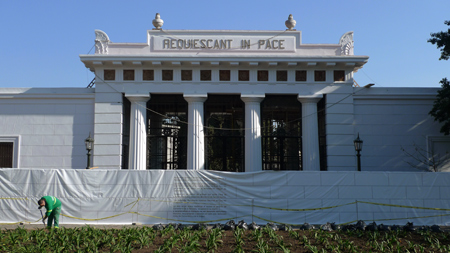
Following the rain damage in February 2010, access to Recoleta Cemetery through the main entrance gate was restricted. Urgent repairs were necessary, & at the closing of this blog in March some restoration had begun. Returning 3.5 months later, the city government seems to have taken advantage of events to undertake a larger project.
A few details are available on an infopanel located outside. In the space of 45 days, the city will pay Naku Construcciones about 225,000 pesos (currently U$S 57,000) for restoration under the supervision of architect Santiago Jorge Bayazbakian. Of Armenian descent, Bayazbakian has done a number of works for the city under Macri’s administration. What’s unclear is how the final project will look. Sketches show day & night representations of the cemetery, but as it appeared before the staircase destruction in May 2010… no handicapped ramp to be found:
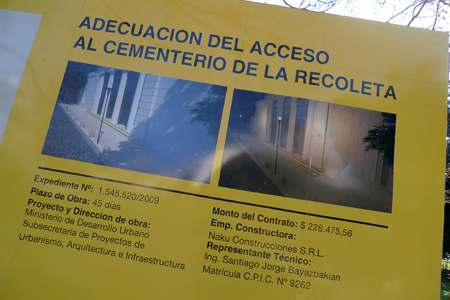
Covering the entire gate is the following text:
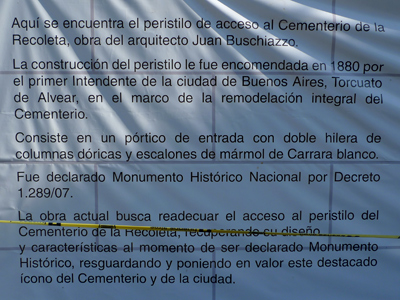
Aquí se encuentra el peristilo de acceso al Cementerio de la Recoleta, obra del arquitecto Juan Buschiazzo. La construcción del peristilo le fue encomendada en 1880 por el primer Intendente de la ciudad de Buenos Aires, Torcuato de Alvear, en el marco de la remodelación integral del Cementerio. Consiste en un pórtico de entrada con doble hilera de columnas dóricas y escalones de mármol de Carrara blanco. Fue declarado Monumento Histórico Nacional por Decreto 1.289/07. La obra actual busca readecuar el acceso al peristilo del Cementerio de la Recoleta, recuperando su diseño y características al momento de ser declarado Monumento Histórico, resguardando y poniendo en valor este destacado icono del Cementerio y de la ciudad.
Here can be found the peristyle entrance of Recoleta Cemetery, the work of architect Juan Buschiazzo. The peristyle’s construction was commissioned in 1880 by the first mayor of the city of Buenos Aires, Torcuato de Alvear, as part of a remodel of the entire cemetery. It consists of an entrance gate with double rows of Doric columns & white Carrara marble staircases. It was declared a National Historic Monument by Decree 1,289/07. Current works seek to refurbish the peristyle entrance, recovering its design & characteristics at the moment it was declared a historical monument, saving & recognizing this well-known icon of the cemetery & of the city.
It is interesting how the text alludes to the staircase destruction for those in the know & how it provides a cryptic message for those who don’t. There is no mention of rain damage. If the staircase is to be replaced, where will the marble come from? Seems like such a large project would take more than 45 days.
Given current works, the main entrance has been under construction/destruction for over one year:
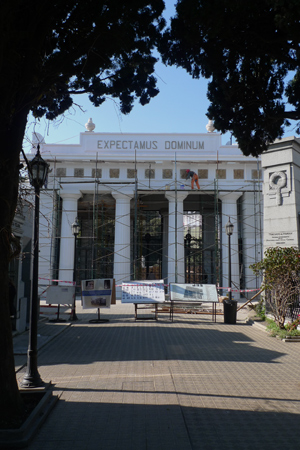
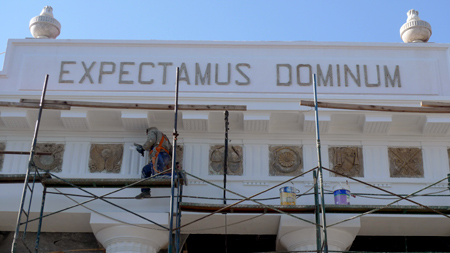
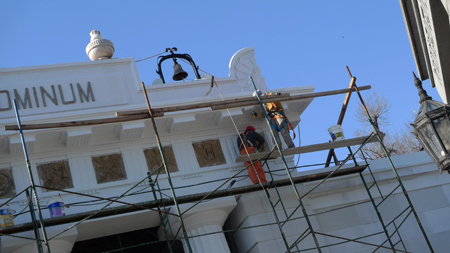
Until completion of the project, the only access to Recoleta Cemetery is via a service entrance to the left of the main gate:
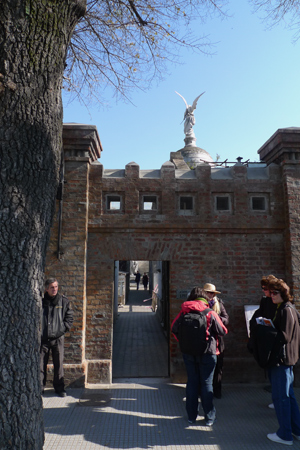
Update (07 Nov 2010): Works on the entrance gate appear to be almost complete. New bathrooms are installed, but the project has taken considerably longer than the original plan. Hopefully the main entrance will be open by the end of the year:
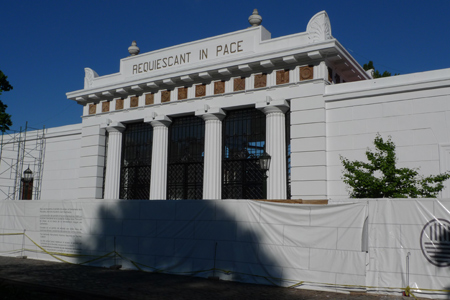
Update (29 Nov 2010): Scaffolding has been removed, the paint has dried, office space has been added & new restrooms have been installed. But most impressive is that the marble staircase of the entrance gate has been restored. Yea! No more handicapped access ramps & the symbols above are no longer the sickeningly sweet, Sevilla-inspired ochre yellow. They now have a mottled, aged effect which looks quite nice. The gate should be open to the public soon:
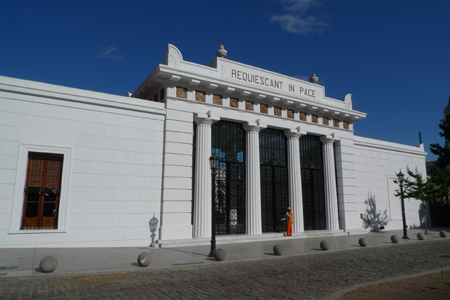
For a first-hand look at what archaeologists uncovered during the entire process, Daniel Schávelzon & his team wrote this article: “El pórtico central del cementerio de la Recoleta: estudio de su escalinata frontal”. Enjoy!
You see? you got your marble back :)) vote for macri now
I guess we have to destroy everything in Buenos Aires first before learning to appreciate it 🙂 Vamos Macri jajaja
Increíble Rob que hayan hecho algo bien! De donde habrán sacado el mármol? Luce igual que como estaba antes de la destrucción?
Concuerdo con lo del color de la letra!
Xoxo
Fede.
La verdad, no sé donde consiguieron el mármol… supongo que de alguna cantera en Argentina. La plata para comprar mármol de Carrara no hay 🙂 Luce parecido, no igual, pero no importa… es un buen trabajo. Por fin algo hecho bien! Saludos!
Por favor traducir en castellano
No funciona Google Translate?